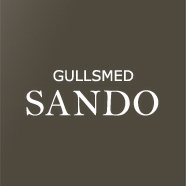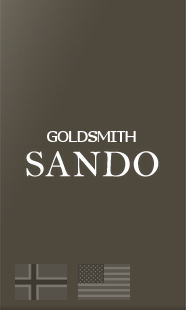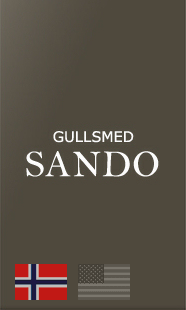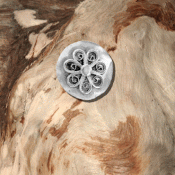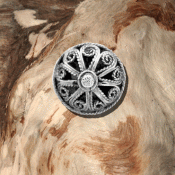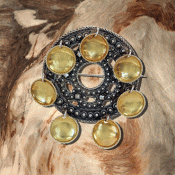Micro museum
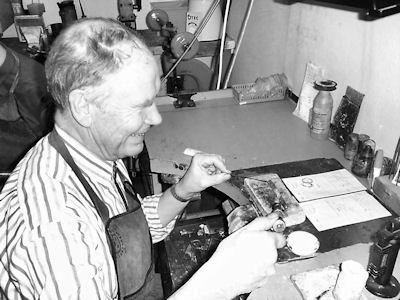
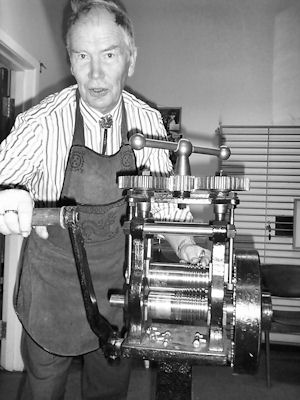
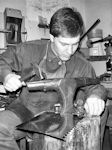
Here you see our little micro museum. It displays objects that we have collected through the years. Some of the brooches we know a lot about, while others are more mysterious. There are a lot of brooches that was never marked by the goldsmith, so we may never know for sure who made them or when they were made.
The reason for some of the smiths to not mark their work was that it was just the city goldsmith that was allowed to make the brooches. If a countryside goldsmith signed his work, it would be like signing your own punishment!
It may be worth noticing that it was actually the cast technique that came first. A lot of objects were cast before the filigree method became popular. Even though the technique has evolved, the principle is old and well known in a historic point of view.
Return to the frontpage“Spirang” brooch
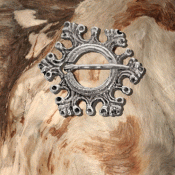
A "Spirang" brooch, about 300 years. The name for this brooch is local to Tinn, in the rest of Norway it is called a spur brooch.
Brooch model for a sand cast
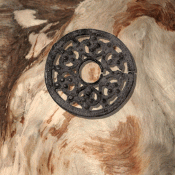
This is a template for a rose brooch. They are now rare to find.
Button
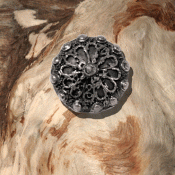
We don't know too much about this button. It has a filigree pattern and is possibly 200 years old. The craftsmanship resembles that of Søren Erlend Maurud.
Coat buttons gentleman’s Bunad
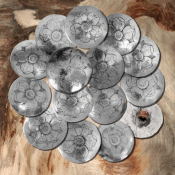
A coat button for the gentleman's Bunad. They were usually engraved.
Coat chain for an old ladies coat
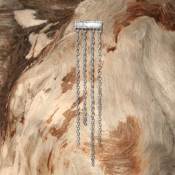
A coat chain, about 200 years old. It is made in oxidized silver, it is about 18 cm long and has four chains. It had a plate in both ends.
Coat chain restored
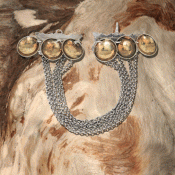
This one was made by one of the Karlsrud smiths in Tessungdalen in Tinn.
Dish brooch fair gilded
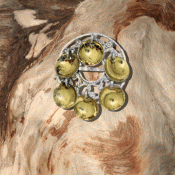
A leaf brooch / dish brooch, about 200 years old. This is actually rose brooches with gilded dishes.
Erland brooch
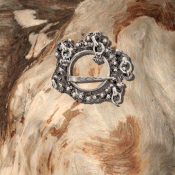
The Erland brooch is about 250 years old. The name is after Søren Erland Maurud (Plassen) that lived in Tinn in the 1700s.
Fair haystack button
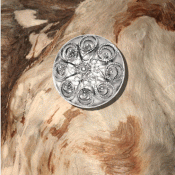
These buttons have a filigree rosette smoldered onto a button base. The rosette stands up like a haystack, because of this it has a airy look
Fastener with red stone
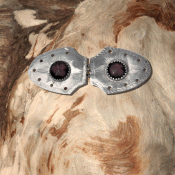
This fastener was made by the town goldsmith in Bergen, and has been marked according to the rules of the time.
Fastener, “Sprette”
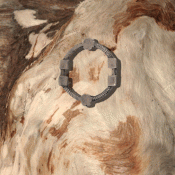
These small brooches are called "Sprette". The "Sprette" is the oldest, original brooch model.
Five-leaved rose buttons
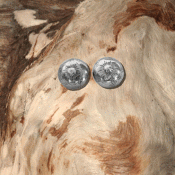
These are tiny five-leaved rose buttons; barely 10 mm in diameter. This was a common vest button for the gentleman Bunad. The coat had bigger buttons.
Holland button
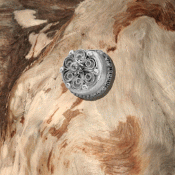
This gorgeous little Holland-button has a ripple with a "kjørne" (a small silver orb) in the center of the top rosette.
Holland button with “demant”
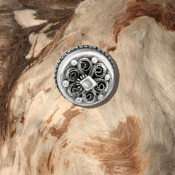
This button is like a lot of other Holland buttons, but it has a so-called "demant" in the center.
Holland buttons
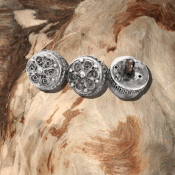
These were usually made by hand. The name originates from the same button type as you find in the Holland and North-Germany national costumes.
Holland buttons with ripples
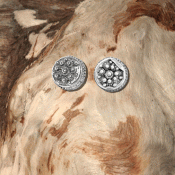
These Holland-buttons does not have the usual filigree rosette, instead it has ripples.
Horn ring oxidized
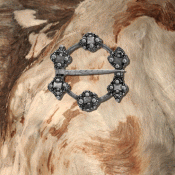
A horn ring, about 150 years old. These have a masculine look. The two side pieces is supposed to look like bullhorns.
Neck button Holland button
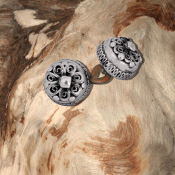
This neck button is made from two Holland buttons attached with a quite long chain.
Neck button with cross leaf
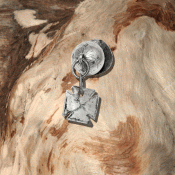
This is an old neck button made from the four-leaved rose button with cross leaf.
Neck buttons oxidized
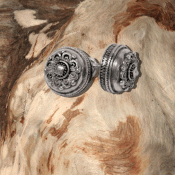
This neck button is made from two Holland buttons, and is attached with a quite long chain.
Neck pin
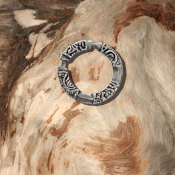
This is a cross tooth pin that has lost its "teeth". The teeth has been worn down over the years.
Oxidized haystack button with “demant”
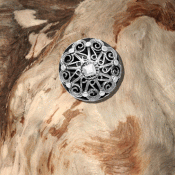
An oxidized haystack button with "demant" made by K. E. Sando 1915-1920.
Ripple ring light gilded
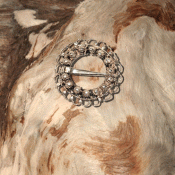
A ripple ring, about 150 years old. This one is handmade, but you could get a cast ripple ring too.
Rose brooch gilded
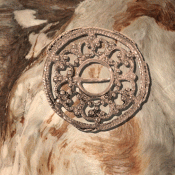
A rose brooch, about 200-300 years old. This one is cast, the common technique at the time.
Rose brooch with dishes
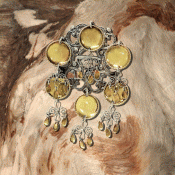
A Leaf brooch/dish brooch. These are rose brooches with dish leaves. This one was made by us around 1960, but this type of brooch may be several hundred years old.
Serpent brooch
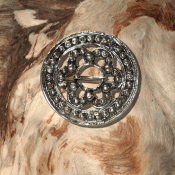
A serpent brooch, about 200-300 years old. This one is cast, but they were handmade too.
Shirt button fair gentleman
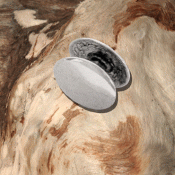
A neck button or shirt button for a gentleman's Bunad. It is made from two Swedish coins from 1851.
Small Holland button
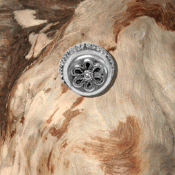
This Holland button is about 15 mm in diameter. The rosette is simple, without silver orbs.


